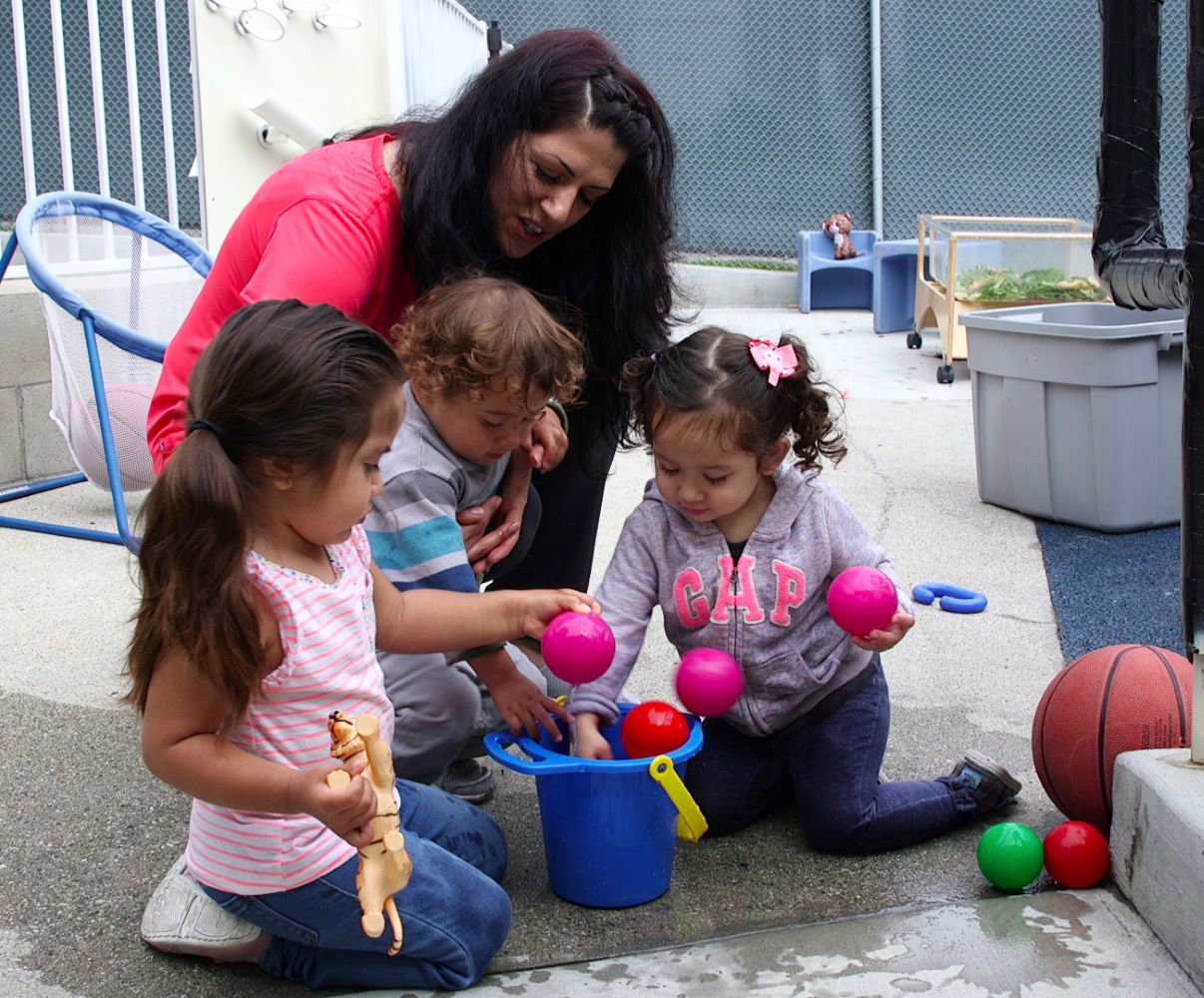
Research shows that “much of how infants and toddlers learn best comes not from specific adult-directed lessons but from [adults] knowing how to maximize opportunities for each child to use natural learning inclinations.”[15] These opportunities, or experiences, can be set up in a planned, purposeful way using the curriculum’s scope and sequence, or occur in the moment as adults follow children’s leads and take advantage of “teachable moments.” (See 45 CFR §1302.31(b)(1)(ii)-(iv) and 45 CFR §1302.35(b)(1)-(2) and (c)(1) and (5).) Experiences for infants and toddlers in classrooms, family child care homes, families’ homes, and during socializations share some common elements:
- They focus on the way children relate to materials, adults, and each other.
- They are based on the developmental level, interests, and needs of each child (or individual child goals, including goals from the IFSP) and input from families, which help ensure the experiences are culturally relevant and age appropriate.
- They support children’s development and learning across the five central ELOF domains.
There are many types of experiences, both indoors and outdoors, that staff can offer infants and toddlers. Teachers, family child care providers, and home visitors may call these by different names, but experiences are typically organized around:
- Telling stories and reading books
- Playing with toys and gross motor equipment
- Exploring music, movement, and art materials
- Pretend play
- Sensory exploration (e.g., sand, water, tasting and preparing food)
- Outdoor play and exploration
Staff may offer one-on-one experiences for individual children. They may also offer one experience for a small group of children and provide individualized attention and support during the experience.
Julia, seated in a large comfy chair, has just finished giving Danilo his bottle when she hears Yessenia stirring from her early nap. Yessenia gets off her mat and crawls into Julia’s lap with Danilo. Julia reaches for a Spanish-language board book that is one of Yessenia’s favorites and asks, “¿Yessenia, quieres leer un libro?” [Do you want to read a book?] Yessenia nods. Julia begins reading aloud in Spanish using a calm voice. As she reads, she holds Danilo close and shifts her position whenever he grows restless. She looks and smiles at Danilo.
Julia also encourages Yessenia to turn the pages, asks simple questions about the pictures, responds to and repeats Danilo’s sounds and Yessenia’s sounds and words, and shares her delight by smiling and laughing when Yessenia laughs.
 In this vignette, Julia tailors her responses to each child as she reads. For Danilo, the book reading experience provides:
In this vignette, Julia tailors her responses to each child as she reads. For Danilo, the book reading experience provides:
- Cuddling and “face time” in the arm of a trusted adult (supports relationship building and attachment)
- Opportunity to hear the sounds of spoken language and exposure to an object called “el libro” (supports language and literacy development in his home language)
At the same time, the reading experience for Yessenia supports relationship building, language and literacy development in her home language, and fine motor skill development. The key to successful experiences, whether planned or spontaneous, one-on-one, or with a small group of children, is having a deep understanding and knowledge of each child and family. This knowledge helps make the experience meaningful and relevant to the child’s development and learning, and it comes from informal observations, ongoing child assessment, and engaging with families.
Planning and carrying out appropriate experiences for infants and toddlers can sometimes be challenging for staff. Even when experiences are based on a child’s interests, abilities, and needs, the child may not respond as expected. Staff may be unsure of what to do when this happens. You can explain that planning experiences means “planning for possibilities.” This idea is central to balancing planning with flexibility. Plans are useful because they help staff stay organized and focused. However, infants and toddlers are unpredictable, so encourage staff to modify the experience or even abandon it and try it at a different time or on a different day. Remind staff that it is more important to follow a child’s lead than to stick to the planned experience!
Also, staff want to offer experiences they believe will support an infant’s or toddler’s development and learning; however, the child’s family may not be comfortable with the experiences because of their beliefs, values, and life situations. “Messy” experiences, such as painting, playing with water or sand, and going outside, especially if it is windy or cold, are examples of experiences to which families may object. Note that some staff may object to offering these experiences as well and for similar reasons. Consider using the same strategies and the multicultural resource offered in the Routines section to engage staff in conversations about negotiating differences of opinion regarding experiences.
[15]Lally, “Infants Have Their Own Curriculum.”
Read more:
Resource Type: Article
National Centers: Early Childhood Development, Teaching and Learning
Age Group: Infants and Toddlers
Audience: Directors and Managers
Last Updated: September 12, 2024